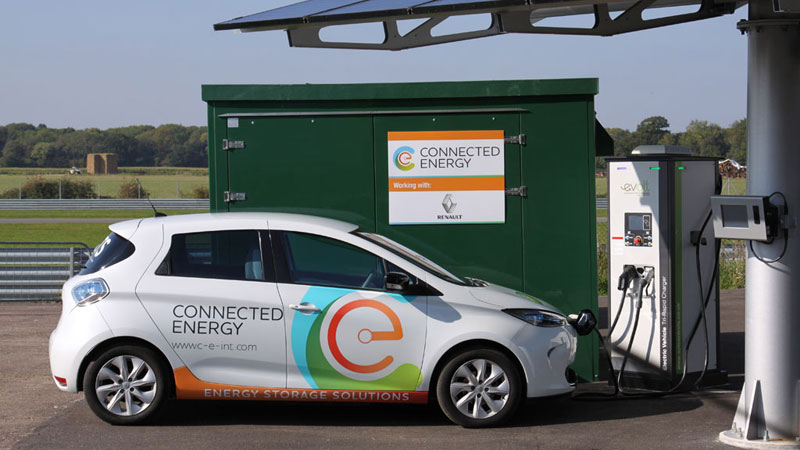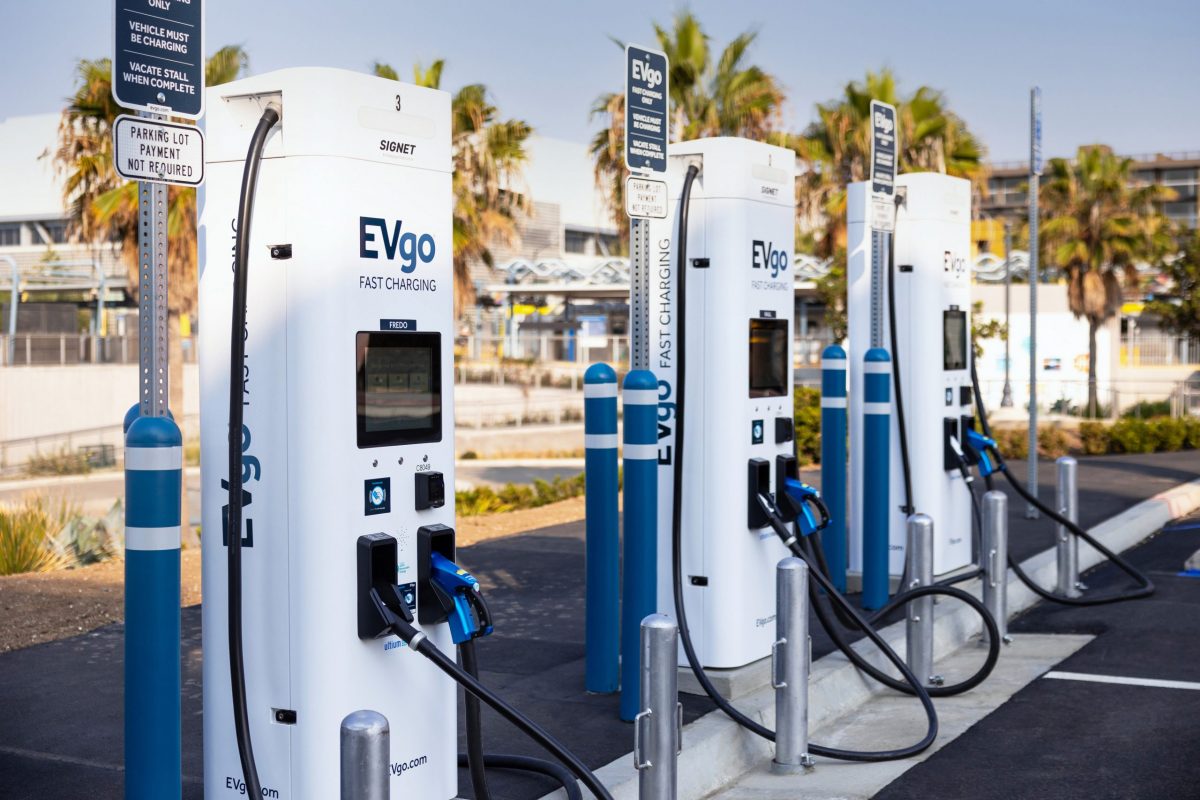In a world where recyclability has become a necessity, it seems counterintuitive to simply discard something that could still hold a significant amount of energy. The battery pack used to power an electric vehicle (EV) is a prime example, and the industry is investigating how to use, reuse and repurpose old battery packs.
The success of an EV today depends largely on its capability to drive long distances on a single charge, and means that the vehicle needs the battery to run as close to optimal performance as possible. As with any lithium-ion battery, however, degradation is a factor to consider, as a result of which there will be a gradual loss of capacity over time.

This could mean that the battery eventually needs to be swapped out and replaced with a new one, although it is worth noting that degradation depends on a number of variables such as battery chemistry, ambient temperature and charging habits. But with the battery accounting for a significant proportion of the overall vehicle cost, what can manufacturers do to make the most of the technology if discarded?
Milking it
After reaching the end of its usable life in an EV, there is typically around 80% of useable capacity in the battery, which can then be deployed as separate storage capacity. Homes, business campuses and even sports arenas can use these batteries as backup power or to feed in additional energy when necessary. For consumers and businesses alike, this can mean greater flexibility to meet power demands, a reduced carbon footprint and greater cost savings.
What’s more, these power stations can help to put solar, wind and other renewable energy sources to more efficient use. These power sources rely on natural elements such as wind and sunshine, which fluctuate by season. By storing this power in a separate station, it can then be used as a reliable non-fluctuating source when necessary. A June 2017 report by Berenberg noted that: “As renewable generation keeps on increasing in the total generation mix, the inherent intermittency of renewable power continues to adversely affect grid stability,” and “second life EV batteries can be used by power grids for “congestion relief and load-shifting.”
A separate report published by the UK National Grid in July 2017 highlighted a similar opportunity. In combination with other approaches, energy storage systems could help to create “one of the most efficient, productive energy systems in the world,” it surmised. However, there are barriers to adoption. According to EUROBAT, the Association of European Automotive and Industrial Battery Manufacturers, there is currently a double grid charge for battery storage systems in Europe.
Powering up
Reusing, or repurposing EV batteries is not a new concept, and has already been put into practice by various players both within and outside the automotive industry.
Back in November 2016, the Amsterdam ArenA, home to the AFC Ajax football team and a major venue for concerts and events, signed a ten-year deal with Nissan, Eaton and The Mobility House to integrate used Leaf EV batteries into its power supply. The idea was to create a separate energy storage system – dubbed ‘xStorage’ – that could be used to distribute power to the stadium and surrounding neighbourhood when necessary. The Mobility House will operate the system. In September 2017, it was announced that a large energy system with a minimum capacity of three megawatts would be installed in the arena’s car park. Due to be completed in the first quarter of 2018, this facility will use a combination of new and used Nissan Leaf batteries to meet the equivalent power needs of ‘a few thousand households’, according to Eaton.

Speaking to Megatrends, Ponz Pandikuthira, Vice President of Product Planning at Nissan Europe explained that the OEM is investigating how EVs can integrate with the society around them more intelligently. “xStorage uses batteries that Nissan manufactures for residential household and commercial use, and are actually made out of used, and in some cases, new EV batteries,” he explained. Since 2009, Nissan has also been working with Japanese supplier Sumitomo as part of a joint venture called ‘4R’ to repurpose lithium-ion batteries that previously powered EVs.
General Motors too has been using Chevrolet Volt batteries for similar purposes since mid-2015, repurposing first generation batteries at the time when the second-generation Volt was due to enter production. Just five of these batteries can power the lights at GM’s Enterprise Data Center in Milford, Michigan. The batteries are used in tandem with on-site solar arrays and wind turbines to provide all energy needs for the office building and parking lot lights. Excess energy can also be fed back into the grid that supplies the Milford Proving Ground campus.
Pablo Valencia, Senior Manager of Battery Lifecycle Management at GM, told Megatrends back in August 2015 that the OEM was focused on extending the useful life of battery systems once they have reached the end of their useful life in a vehicle. “We think this strategy is more beneficial in terms of overall economics,” he said, “when you consider that a battery could be deployed in a secondary use application for more than ten years beyond the vehicle, depending on use.”
Daimler has made a similar push, and in September 2016 partnered with The Mobility House to reuse batteries from smart fortwo EVs. In fact, the OEM constructed a dedicated manufacturing facility in Lünen, Western Germany to provide 13-megawatt hours (MWh) of capacity to the German energy market. The German government is making a concerted effort to transition the country towards renewable energy, with targets for 45% of power consumption to be generated by renewable sources by 2025.

The possibilities are (nearly) endless
It’s not just large commercial ventures in the running for EV batteries, but everyday households as well. Nissan’s xStorage system can also be integrated into a domestic setting in combination with an existing electric vehicle, for example. “You can plug a Nissan EV into the grid and at periods of peak demand, the grid can actually tap into the energy that’s stored in your vehicle to help stabilise the network and reduce the cost of energy delivery,” explained Nissan’s Pandikuthira. “When energy is less expensive, you can store it in an xStorage unit in your house, and then it can be used to charge an electric vehicle.”
Then there is the opportunity to use old batteries to help charge new EVs. Building and upgrading charging infrastructure is deemed a top priority for most markets that have already invested in EVs, and consumers increasingly demand faster charging times.
Berenberg reports that batteries can help to relieve the pressure that public rapid charging stations could place on the grid in future. “Use of energy storage facilities can help alleviate stresses in the system and also reduce the need for additional capex, thus optimising existing infrastructure,” it said in the June 2017 report.

In August 2017, for example, Renault and UK-based energy storage company E-STOR installed two high-power charging points on highways in Belgium and Germany, which leverage used Renault EV batteries for storage capacity.
While there is significant investment into optimising batteries for use within an EV, it is clear that the opportunities to leverage its remaining capacity once outside of the vehicle are vast. Could the battery-powered car be built at a battery-powered factory, and driven to a battery-powered home where it is then partially charged by old EV batteries? Maybe not now, but longer term, why not?
This article appeared in the Q4 2017 issue of Automotive Megatrends Magazine. Follow this link to download the full issue



